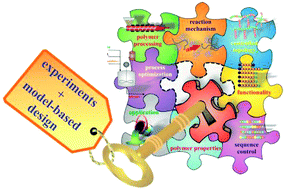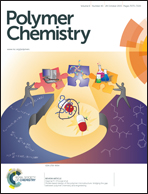Model-based design of the polymer microstructure: bridging the gap between polymer chemistry and engineering
Abstract
The performance of polymeric materials depends strongly on the control over the polymer microstructure during the synthesis step. In this review, attention is paid to the potential of microkinetic modelling to facilitate the identification of optimal reactants and reaction conditions to design the polymer microstructure in bulk and solution (post)polymerisation processes. Focus is on living polymerization, reversible deactivation radical polymerization (RDRP) and “click” chemistry techniques, covering both batch and continuous synthesis approaches. A description according to the increasing level of macromolecular detail and thus modelling complexity is provided, including not only the characterization of the polymer microstructure via a finite number of variates (e.g. chain length, overall composition and branching content) but also its explicit visualisation by the simulation of the architecture and monomer sequences of a representative number of individual polymer chains. Several complementary case studies are included to demonstrate the high relevance of model-based design for the development of improved and novel synthetic protocols for precision control.


 Please wait while we load your content...
Please wait while we load your content...